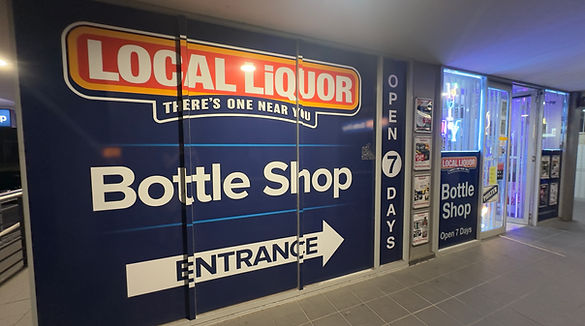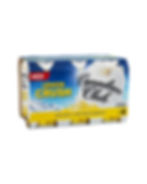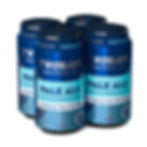
Discover Local Liquor Ultimo
Explore a wide selection of local and imported spirits, wines, and beers at Local Liquor Ultimo. From premium whiskeys to craft beers, we have something for every palate. Visit us today for the ultimate liquor shopping experience.
Sparkling wine is a wine with significant levels of carbon dioxide in it, making it fizzy. While it is common to refer to this as champagne, European Union countries legally reserve that word for products exclusively produced in the Champagne region of France. Sparkling wine is usually either white or rosé, but there are examples of red sparkling wines such as the Italian Brachetto, Bonarda and Lambrusco, and the Australian sparkling Shiraz. The sweetness of sparkling wine can range from very dry brut styles to sweeter doux varieties (French for 'hard' and 'soft', respectively).
White wine is a wine that is fermented without undergoing the process of maceration, which involves prolonged contact between the juice with the grape skins, seeds, and pulp. The wide variety of white wines comes from the large number of varieties, methods of winemaking, and ratios of residual sugar. White wine is mainly from "white" grapes, which are green or yellow in colour, such as the Chardonnay, Sauvignon blanc and Riesling. Some white wine is also made from grapes with coloured skin, provided that the obtained wort is not stained. Pinot noir, for example, is commonly used to produce champagne.
Red wine is a type of wine made from dark-colored grape varieties - (red grapes.) The color of the wine can range from intense violet, typical of young wines, through to brick red for mature wines and brown for older red wines.
The top 20 red grape varieties by acreage (listed alphabetically) are:
Beer is an alcoholic beverage produced by the brewing and fermentation of starches from cereal grain—most commonly malted barley, although wheat, maize (corn), rice, and oats are also used. The grain is mashed to convert starch in the grain to sugars, which dissolve in water to form wort. Fermentation of the wort by yeast produces ethanol and carbonation in the beer. Beer is one of the oldest and most widely consumed alcoholic drinks in the world, and one of the most popular of all drinks. Most modern beer is brewed with hops, which add bitterness and other flavours and act as a natural preservative and stabilising agent. Other flavouring agents, such as gruit, herbs, or fruits, may be included or used instead of hops. In commercial brewing, natural carbonation is often replaced with forced carbonation.

.png)
Liqueur is an alcoholic drink composed of spirits (often rectified spirit) and additional flavorings such as sugar, fruits, herbs, and spices. Often served with or after dessert, they are typically heavily sweetened and un-aged, beyond a resting period during production, when necessary, for their flavors to mingle.
Liqueurs are historical descendants of herbal medicines. Today they are produced all over the world, commonly served neat, over ice, with coffee, in cocktails, and used in cooking.

Cider is an alcoholic beverage made from the fermented juice of apples. Cider is widely available in the United Kingdom (particularly in the West Country) and Ireland. The United Kingdom has the world's highest per capita consumption, as well as the largest cider-producing companies. In the U.S. and Canada, varieties of alcoholic cider are often called hard cider to distinguish it from non-alcoholic apple cider or "sweet cider", also made from apples. In Canada, cider cannot contain less than 2.5% or over 13% absolute alcohol by volume. The juice of most varieties of apple, including crab apples, can be used to make cider, but cider apples are best. The addition of sugar or extra fruit before a second fermentation increases the ethanol content of the resulting beverage. Cider alcohol content varies from 1.2% to 8.5% ABV or more in traditional English ciders, and 2.5% to 12% in continental ciders. In UK law, it must contain at least 35% apple juice (fresh or from concentrate), although CAMRA (the Campaign for Real Ale) says that "real cider" must be at least 90% fresh apple juice. In the US, there is a 50% minimum. In France, cider must be made solely from apples.
Ginger beer is a sweetened and carbonated, usually non-alcoholic beverage. Historically it was produced by the natural fermentation of prepared ginger spice, yeast and sugar.Modern ginger beers are often manufactured rather than brewed, frequently with flavour and colour additives, with artificial carbonation. Ginger ales are not brewed.Ginger beer is still produced at home using a symbiotic colony of yeast and a Lactobacillus (bacteria) known as a "ginger beer plant" or from a "ginger bug" starter created from fermenting ginger, sugar, and water.
Hard Seltzer, adult seltzer, mature seltzer, spiked seltzer and hard sparkling alcohol water is a type of highball drink containing seltzer (carbonated water), alcohol, and often fruit flavorings. In the US the alcohol is usually made by fermenting cane sugar or malted barley. Hard seltzer products outside of the US have been found to use either neutral spirit, or fermentation of fruit. The alcohol by volume is around 5% and the calorie-content is relatively low, derived almost entirely from fructose.
Premixed alcohol, or RTDs (ready-to-drink), are pre-mixed alcoholic beverages that are sold in a ready-to-consume format, typically in cans or bottles. They consist of a spirit base like vodka, whisky, or rum, combined with a mixer such as soda, juice, or flavored syrup. Examples include vodka lemonade, rum and cola, or various flavored spirit coolers.
Spirits are alcoholic drinks produced by the distillation of grains, fruits, vegetables, or sugar that have already gone through alcoholic fermentation.
The distillation process concentrates the alcohol, the resulting condensate has an increased alcohol by volume. As liquors contain significantly more alcohol (ethanol) than other alcoholic drinks, they are considered "harder". In North America, the term hard liquor is sometimes used to distinguish distilled alcoholic drinks from non-distilled ones, whereas the term spirits is more commonly used in the United Kingdom. Some examples of liquors include vodka, rum, gin and tequila. Liquors are often aged in barrels, such as for the production of brandy and whiskey, or are infused with flavorings to form flavored liquors, such as absinthe.
Like other alcoholic drinks, liquor is typically consumed for the psychoactive effects of alcohol. Liquor may be consumed on its own (i.e. "neat"), typically in amounts of around 50 millilitres (1.7 US fluid ounces) per served drink; or frequently mixed with other ingredients to form a cocktail.






























